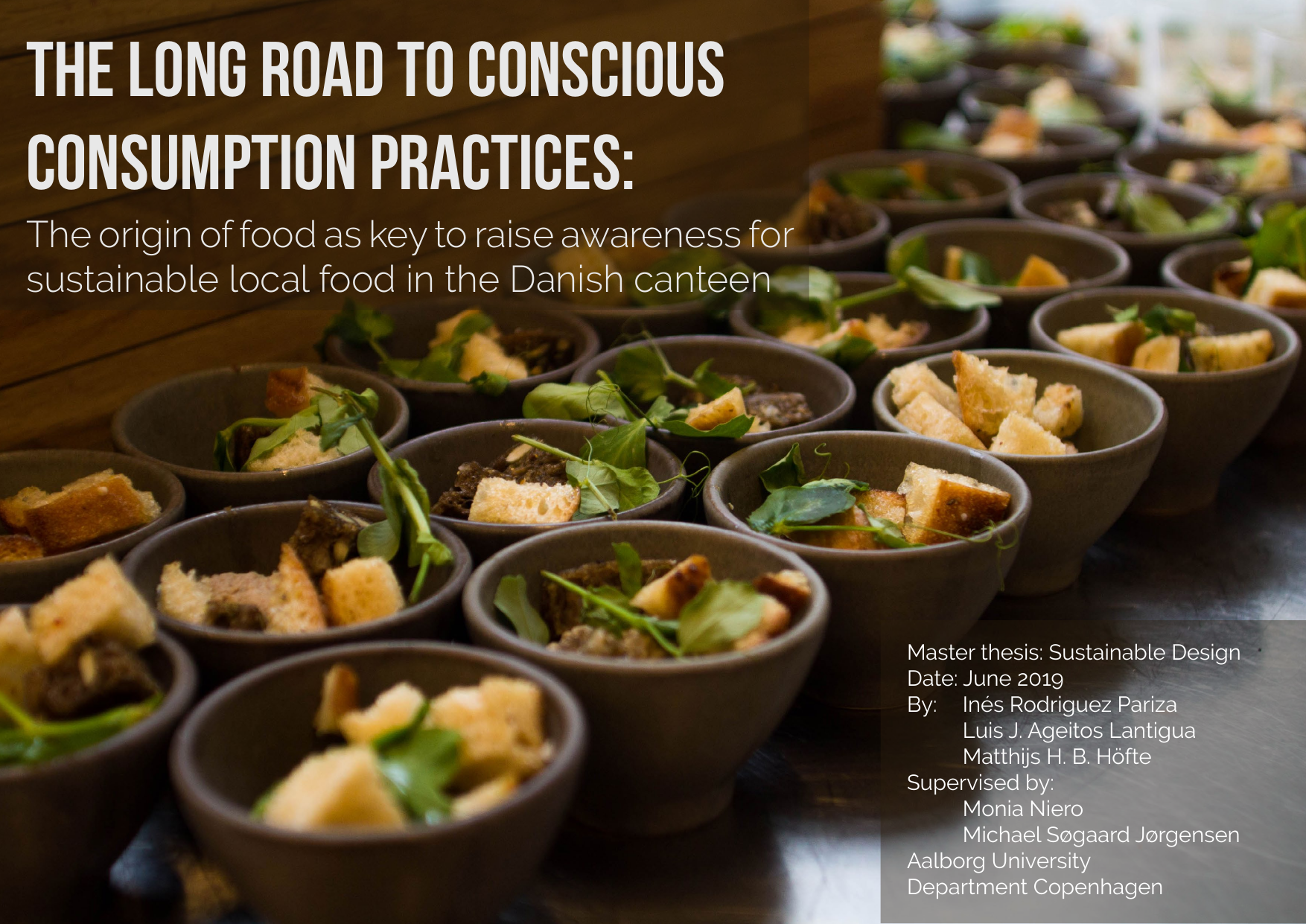
The long road to conscious consumption practices: The origin of food as key to raise awareness for sustainable local food in the Danish canteen: The origin of food as key to raise awareness for sustainable local food in the Danish canteen
Term
4. Term
Education
Publication year
2019
Submitted on
2019-06-07
Pages
110
Abstract
This thesis aims to understand the creation of conscious consumer practices in the Danish canteen context (under the framework of practice theory) and introduces a ‘design thing’ to facilitate a dialogue among consumers and indirectly with other stakeholders to realise steps towards more local food consumption as example issue for sustainably conscious consumption. We studied the main issues around food consumption and gained an overview of its complexity from literature to approach the locality of products as our main point of interest. Numerous researchers agree that local food consumption would support the local economy and create a social reconnection between producer and consumer and for certain products reduces environmental impact. Institutions like the European Union and the United Nations also demand food organisations to be transparent with information about food for consumers to make more conscious choices, especially the EU with new regulation demanding to explicitly point out the origin of main ingredients of products.. Via interviews with relevant catering professionals, observations and questionnaires in three canteens, we created an overview of the practice of ‘lunching at the canteen’. This gave us multiple viewpoints on obstacles to overcome and opportunities for change in a restricted context of a Danish canteen. In the sequential design process, we worked with an iterative design object(design thing). This object used information on the origin of food as main subject for a dialogue on the concerns of locality between consumers and client in the context of one example canteen. Our final findings are from reflections on the construction of this object and documented consumers interactions. Here, we found successful qualities for further development in starting discussions between consumers on what they like to eat at the canteen and the related environmental concerns of their canteen food. We saw a holistic approach to work best, where the consumer could become conscious by mixing subjects of interest like the creation of a canteen recipe with environmental impact information in the form of comprehensible labels.
This thesis aims to understand the creation of conscious consumer practices in the Danish canteen context (under the framework of practice theory) and introduces a ‘design thing’ to facilitate a dialogue among consumers and indirectly with other stakeholders to realise steps towards more local food consumption as example issue for sustainably conscious consumption. We studied the main issues around food consumption and gained an overview of its complexity from literature to approach the locality of products as our main point of interest. Numerous researchers agree that local food consumption would support the local economy and create a social reconnection between producer and consumer and for certain products reduces environmental impact. Institutions like the European Union and the United Nations also demand food organisations to be transparent with information about food for consumers to make more conscious choices, especially the EU with new regulation demanding to explicitly point out the origin of main ingredients of products.. Via interviews with relevant catering professionals, observations and questionnaires in three canteens, we created an overview of the practice of ‘lunching at the canteen’. This gave us multiple viewpoints on obstacles to overcome and opportunities for change in a restricted context of a Danish canteen. In the sequential design process, we worked with an iterative design object(design thing). This object used information on the origin of food as main subject for a dialogue on the concerns of locality between consumers and client in the context of one example canteen. Our final findings are from reflections on the construction of this object and documented consumers interactions. Here, we found successful qualities for further development in starting discussions between consumers on what they like to eat at the canteen and the related environmental concerns of their canteen food. We saw a holistic approach to work best, where the consumer could become conscious by mixing subjects of interest like the creation of a canteen recipe with environmental impact information in the form of comprehensible labels.
Keywords
Documents
